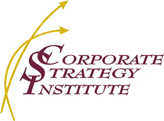
Growth Strategies: Getting The Right People Part #3
When looking at a resume, what do you find most significant?
In this series, we have polled HR experts in various fields to help determine what the Growth Strategies are in getting the right people for your organization. To see posts #1 and #2, go to www.corporatestrategy.com and click on blogs. Part #1 covered the question of the candidates technical fit for the job, part #2 covered the candidates cultural fit for the organization. In this, the 3rd part, we are asking the question: When looking at a resume, what do you find most significant?
Since my expertise is in business development, increasing the value of a company and the corporate strategic planning and implementation side of a company’s growth strategy, I reached out to four experts to have them weigh in on the question.
Our experts today are:
Kathy Boyd – VP Sales and Marketing, EADs, Global Leader in Defense and Aerospace
Kristie Svetics – Kristie L. Svetics, SPHR, Central Florida HR Manager, Regions Bank, Personal Banking Solutions That Simplify Your Life.
Robert Newland – President & CEO, Newland Associates, an MBE Certified CPI Partner, Providing Recruitment & Talent Management Solutions.
Ashley Allen – Principal, Acacia Insights, Providing Consulting, Team Development and Coaching.
Kathy Boyd likes to look for what role the applicant is seeking versus what are their most current positions. “I try to assess the match between these two and the role I am attempting to fill” she says. She feels that gaps in employment or wide deviations between roles are a red flag if she is looking for someone that she wants to be a longer term employee.
Given the understanding that the resume is a marketing/sales tool for the candidate, Kristie Svetics looks for positions on their resume of increasing responsibility and accomplishment with 2-3 years at each position.
Robert Newland is looking for measurable results. “My favorite symbols in resumes are $’s, #’s and %’s. For example, let me know what your $ revenue responsibility, let me know the # of people you managed, let me know the % by which you improved sales.”
Ashley Allen takes a broader view. She looks at the whole person. She wants to know if, beyond a listing of roles and respective successes, are there indications that this person has taken ownership for his or her career and personal development? Is the candidate a lifelong learner? Is she or he consistently engaged in the community, industry or professional associations? Are advanced degrees or certifications evident? Are there avocations that show a life beyond work? These can suggest a willingness to collaborate, grow and change — and keep both skills and network fresh.
In Part #4, the experts will answer the question: When you have employees that have not evolved with the times, how do you determine whether to eliminate them or try to get them re-aligned?
Dr. Sarah Layton CMC, FIMC is CEO/Managing Partner of Corporate Strategy Institute, specializing in the business development, increasing the value of a company and the corporate strategic planning and implementation side of the growth strategy equation.
For a free 30 minute consultation (not a sales pitch) with Dr. Sarah Layton on how best to grow your organization, email your request to info@corporatestrategy.com .
Be sure and go to our website www.corporatestrategy.com and request our free article.




















No Comments Yet
You can be the first to comment!